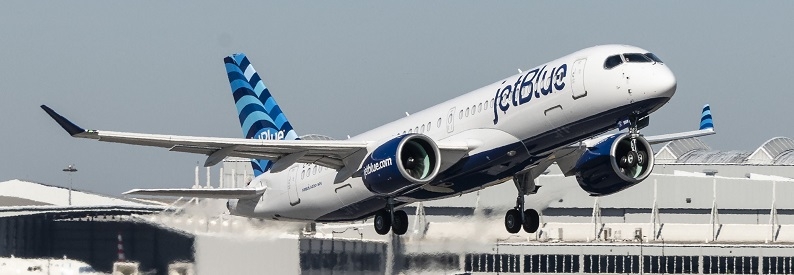JetBlue Adjusts Fleet Strategy, Delays Aircraft Deliveries to Focus on A220-300s

JetBlue Airways has strategically decided to reduce its aircraft delivery pace to an average of 24 planes annually over the next five years, following an agreement with Airbus and its business partners. This move will defer approximately USD2.5 billion in aircraft capital expenditures originally slated for 2024 through 2027. Emphasizing the transition to a more efficient fleet, JetBlue is prioritizing the introduction of the A220-300, aimed at replacing its older ERJ 190-100AR aircraft.
With a substantial order of seventy-six A220-300s, alongside a mix of A321neo variants, JetBlue is adjusting its fleet modernization plan to better align with its financial and operational goals. The focus on the A220-300, noted for its fuel efficiency and passenger comfort, underscores the airline’s commitment to improving its cost structure and environmental footprint.
In 2024, JetBlue anticipates taking delivery of 27 new aircraft, entailing a full-year capital expenditure of around USD1.6 billion. This adjusted delivery schedule also includes plans to extend the service life of approximately thirty A320 jets. This decision comes as the airline navigates financial challenges, including a recent net loss and the impact of a blocked merger with Spirit Airlines, as well as operational hurdles like the grounding of some A320neo-family aircraft due to engine issues.
The airline’s fleet management strategy reflects a cautious approach to growth and investment, ensuring a steady path towards recovering positive free cash flow. By prioritizing the A220 and adjusting the pace of deliveries, JetBlue aims to enhance its competitive edge with a modern, efficient fleet while managing financial commitments more effectively.
JetBlue’s current fleet comprises a diverse array of aircraft, signaling the airline’s phase of transition towards newer, more efficient models. The focus on the A220-300 not only demonstrates JetBlue’s commitment to operational efficiency but also positions the airline for sustainable growth in the competitive US aviation market.
